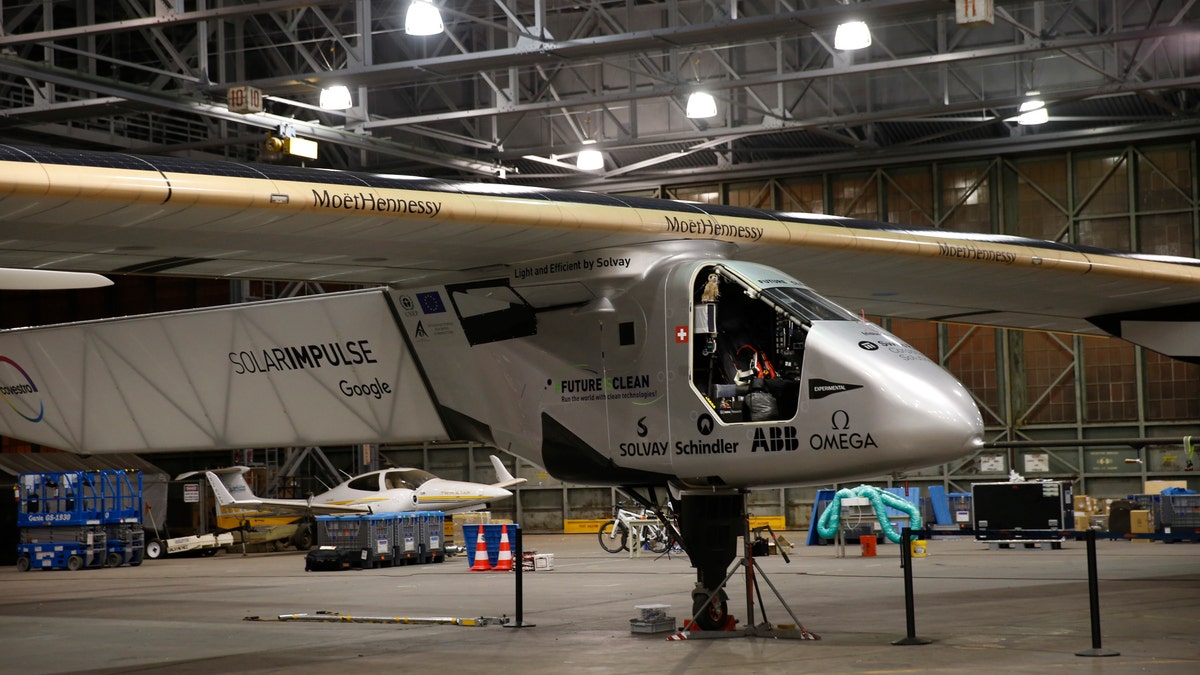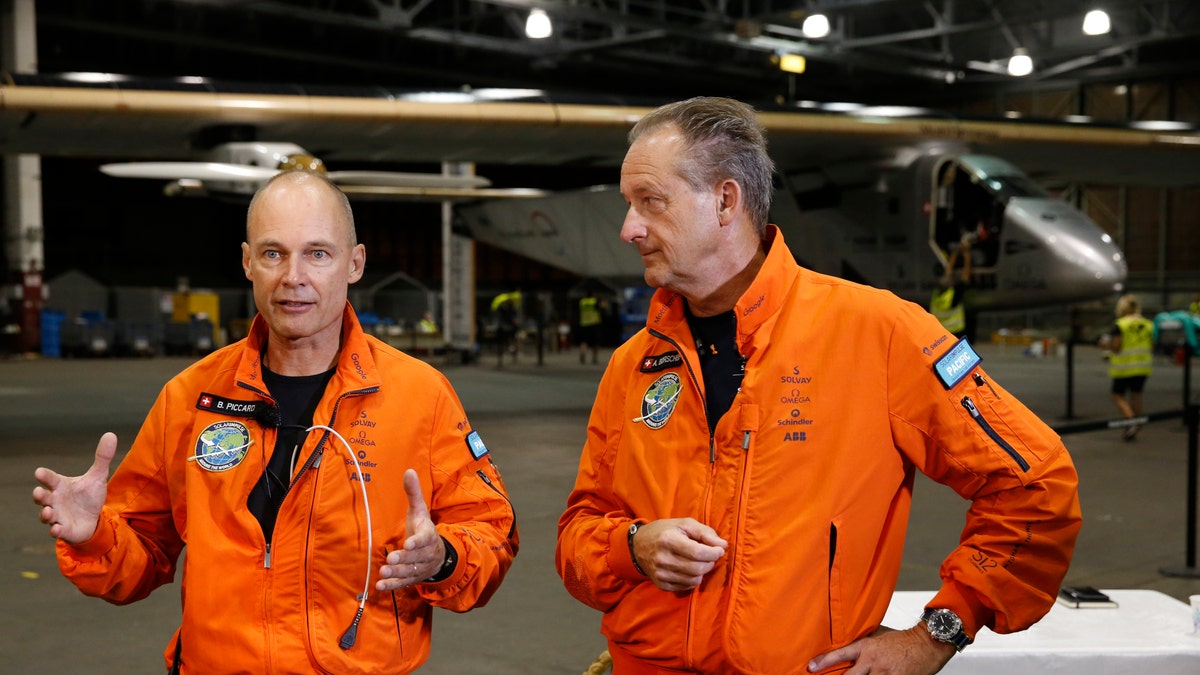
Ground crew prepare for the departure of the Solar Impulse 2 solar plane from the Kalaeloa Airport, Thursday, April 21, 2016, in Kapolei, Hawaii. The Solar Impulse team landed in the islands in July after a record-breaking flight from Japan. (AP Photo/Marco Garcia)
Solar Impulse 2 will resume its record-breaking solar-powered journey around the world Thursday when it takes off from Hawaii on a 62-hour flight to California.
The plane has had a nine-month layover in Hawaii while the Solar Impulse team fixed damage that occurred during Solar Impulse 2’s historic flight from Japan last year.
Piloted by Bertrand Piccard, the plane will take off from Kalaeloa Airport at 12 p.m. ET on the ninth leg of its odyssey. Solar Impulse 2 is expected to reach Moffett Airfield, Mountain View, Calif. at around 4 a.m. ET Sunday.
Related: Solar Impulse 2 reaches Hawaii, shatters records in historic Pacific flight
“After years of dreaming about flying for several days on, I can't wait to do it for real!” Piccard tweeted Thursday.
After years of dreaming about flying for several days on, I can't wait to do it for real! https://t.co/tx7CTOSo7O pic.twitter.com/itQjgsrcxD
— Bertrand PICCARD (@bertrandpiccard) April 20, 2016
Piccard will send a message to world leaders Friday, which is Earth Day, according to the Solar Impulse blog.
The incredible solar-powered trek began in March 2015 when Solar Impulse 2 took off on the first leg of its journey from Abu Dhabi to Oman. Since then, the aircraft has travelled 12,401 miles and spent 254 hours and 58 minutes in the air.
Related: Solar Impulse 2’s epic journey in pictures
The plane is the brainchild of explorer and Solar Impulse Chairman Piccard, who is taking it in turns with his fellow Swiss pilot Andre Borschberg to fly the aircraft on its journey across the globe.
Borschberg piloted Solar Impulse 2 on the last leg of its journey, landing in Hawaii on July 3 2015 after an epic 4,480-mile, five -day flight. The 118-hour journey shattered the record for longest solar-powered flight in terms of distance and duration, easily surpassing the 1,491-mile, 44-hour record Borschberg set when flying from China to Japan on the previous leg of the trip. Borschberg also broke the record for longest non-stop solo flight without refueling, which previously stood at 76 hours and 45 minutes.
However, the next leg of the journey was delayed for nine months while the Solar Impulse team repaired damage to the plane’s batteries.
The flight from Japan to Hawaii posed huge mental and physical challenges for Borschberg. The former Swiss military pilot navigated difficult weather conditions and battled exhaustion in the plane’s cramped cockpit, which is too small to stand in.

Solar Impulse 2 pilots Bertrand Piccard, left, and Andre Borschberg speak to the media in front of the solar plane from the Kalaeloa Airport, Thursday, April 21, 2016, in Kapolei, Hawaii. The Solar Impulse team landed in the islands in July after a record-breaking flight from Japan. (AP Photo/Marco Garcia)
Solar Impulse 2, a larger version of a single-seat prototype that first flew six years ago, is made of carbon fiber and has 17,248 solar cells built into the wing that supply the plane with renewable energy, via four motors. The solar cells recharge four lithium polymer batteries, which provide power for night flying.
The aircraft typically flies between 30 mph and 40 mph, although this can increase and decrease significantly depending on wind speed.
Last year Piccard told FoxNews.com that Solar Impulse 2 proves the potential of renewable energy and clean technology. “This was my vision when I created that project – it was to have an airplane that can fly with no fuel,” he said. “This is fantastic, to prove that clean technology can achieve [the] impossible.”
The Solar Impulse chairman also believes that the solar plane could spark increased interest in technologies such as LED lights and electric cars, as well as lightweight vehicles.
Related: Electric rain? Solar panel turns raindrops into power
After flying from Abu Dhabi to Oman, Solar Impulse 2 stopped in India, Myanmar and Nanjing, China, en route to an unscheduled stop in Nagoya, Japan. The plane originally left Nanjing, China, for Hawaii, but diverted to Japan because of unfavorable weather.
After reaching California Solar Impulse 2 is slated to make stops in the midwest and New York before flying over the Atlantic Ocean. It will then stop in southern Europe or North Africa, depending on weather conditions, before ending its epic journey in Dubai.
Follow James Rogers on Twitter @jamesjrogers
The Associated Press contributed to this report
